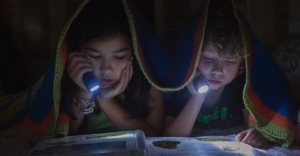What to Do During a Summer Power Outage

Summer is a great season for going outdoors and enjoying the weather, but it can also be a time when the environment and the weather, in particular, can turn against us. Storms, for example, can create winds strong enough to gust, or even become full-blown tornados. This extreme weather can result in falling trees and other incidents that may knock out electricity for entire neighbourhoods.
If you experience a power blackout during the hottest part of the year, you don’t have to worry about staying warm. But you may have some other concerns that you need to address, and we’re going to cover the most important ones here.
Check the Breakers
The first thing you need to do during a power outage is check if it’s actually a problem with the electrical supply, or merely an overload in your own home. If it’s night, for example, then looking out the window will show you whether streetlights and lights in other houses are still on.
If you live in a home and not an apartment, go to the basement, or whichever part of the residence contains the fuse box, and check it to make sure the breaker hasn’t tripped. If it has, this means that your home has somehow overloaded its electrical usage. If you have a modern box, resetting the breaker is all it will take to restore power. If not, you may need to replace fuses.
Turn Off Appliances
If you were using any electrical appliances during the power outage, such as TVs, computers or other hardware, turn them off. When the power resumes, there may be a spike in electrical energy, which can damage these appliances if they’re still on. Machines or devices left on may even lead to a surge that will cause your breaker to trip and require another visit to the electrical box to restore power.
Hydrate Yourself
The air conditioner will not operate without electricity, so if it’s a sweltering day or night, hydration is essential. Not only must you care for yourself, but also keep an eye on your children or elderly relatives because they are more vulnerable to heat than other adults in a home.
Use The Basement
If you have a basement, it always the coldest room in the house, especially if it’s entirely underground. Use this to your advantage during hotter days or nights, if the air conditioner is still not working due to a power outage. This can often be the only room in a home where a cool, comfortable sleep is still possible with no air conditioning.
Use Blinds or Curtains
If a power outage happens during the day, then use blinds, curtains, or other coverings on any windows and doors with southern exposure. Sunlight coming in through these windows will heat up a home, making it intolerable during a heat wave if there’s no air conditioning due to a power outage.
By taking these precautions, you can maintain comfort, health, and safety if a power outage should occur for an extended period of time during the summer.

